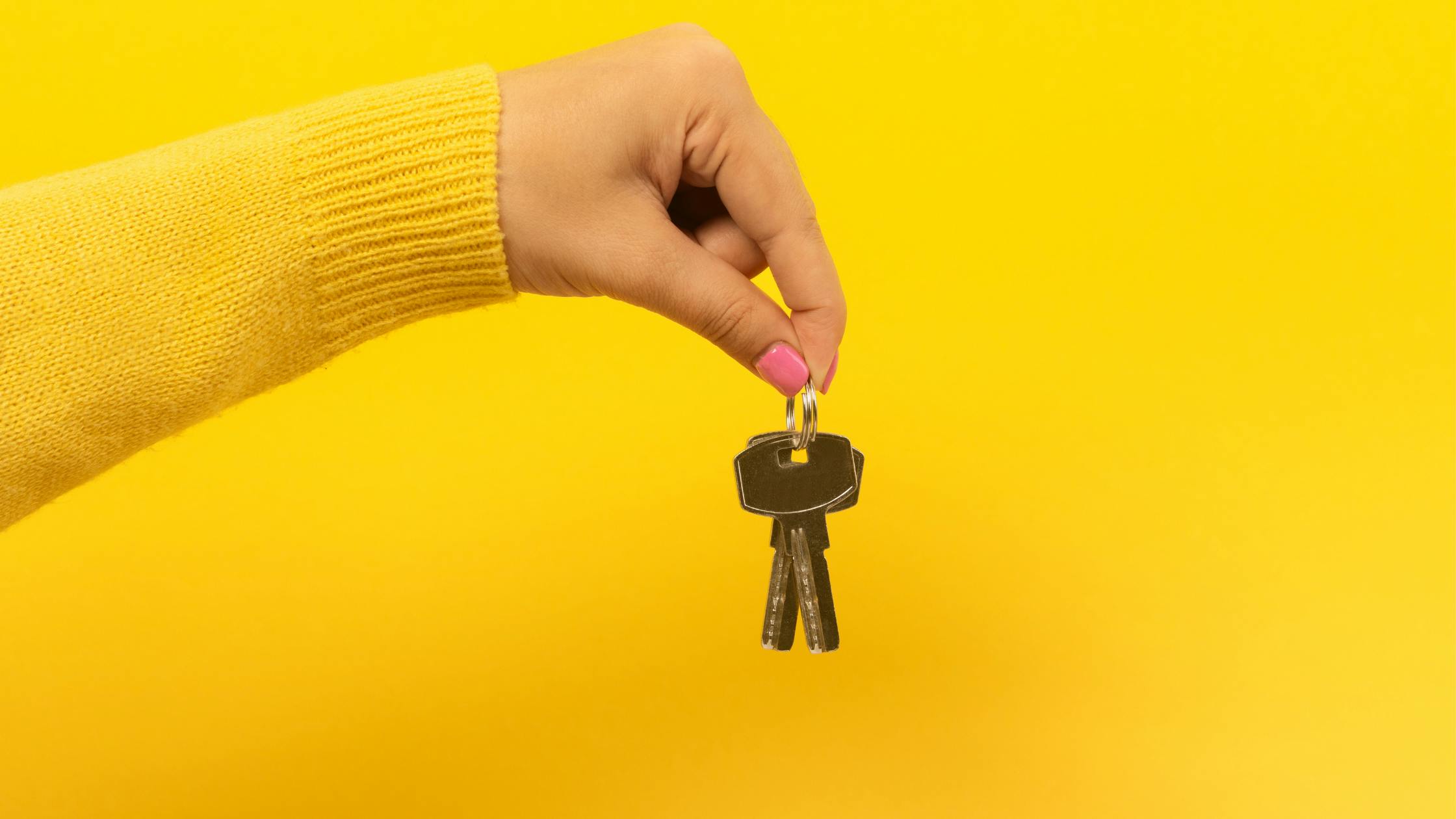What is Dynamic Ownership and how does it work?
With property prices rising so steeply and young people getting priced out of the market, for many first time buyers taking out mortgages with friends and family members could be a viable option to getting on the ladder.
When two or more people buy a property together, there are two main ways the property can be held. The first option is for you and the other buyer(s) to be classed as joint tenants. The second option is known as tenants in common.
Generation Home has introduced a new product known as Dynamic Ownership. It’s effectively a spin-off of tenants in common, but it’s designed for today’s generation of first time buyers who are struggling to buy in an expensive market. If your income or deposit is restricting your ability to get on the ladder, Dynamic Ownership could be the solution.
So how does Dynamic Ownership work? We’ll answer your questions below.
What Is Dynamic Ownership?
What is tenants in common?
Tenants in common is a legal agreement where two or more people buy a property together, but each has an individual share. This could be with your partner, friends or a family member like a brother or sister. Unlike a traditional joint tenant mortgage your share of equity is separate from the others’ stakes.
This means if they die their stake will go to their named beneficiary in their will, not the other co-owners. You can also own different percentages of the property, based on how much deposit you put in and how much you contribute to the monthly repayments over time.
Tenants in common is often popular with couples who are buying a house together but with different size deposit, or potentially gifts or inheritances from family members. If they broke up and sold the house, the equity would be divided based on their individual contributions, rather than split in two like with joint tenants.
You don’t need to have settled down to enter a tenants in common arrangement, though. Friends and siblings can buy a house the same way.
What is Dynamic Ownership?
Dynamic Ownership is a modern version of tenants in common that lets you and up to five friends or relatives buy a house together as co-owners. You’ll combine your deposits and salaries to buy a property, but unlike other joint mortgages, you will each get an individual equity share. This means that owners can own different percentages, and can contribute different amounts to the monthly repayments.
Your individual contributions will be tracked through the home agreement, so it’s kept clear and fair what proportion of the property each owner has. This can work well if you and your brother or sister want to buy together, but one earns more than the other.
If you eventually sell the property, everyone will get back what they put in, as long as the property hasn’t fallen in value. If you sell the property for more than you paid for it, you’ll each get more than you put in based on your original contributions.
You'll need a minimum 5% house deposit
To qualify for Dynamic Ownership, collectively you’ll need to have a deposit of at least 5% of the full property price and be buying a house rather than a flat, as well as pass the lender’s affordability checks.
What’s the difference between joint tenants and tenants in common?
If you enter a joint tenant arrangement, each co-owner owns the whole of the property together and neither owner has a specific or identifiable share. If you were to sell the property, you would split the capital evenly, even if you’ve contributed different amounts. While with tenants in common or Dynamic Ownership, you can own different shares of the property, and if you were to sell the property the amount you got out would reflect the percentage you own.
This is because your share is totally separate from the other owners’, so if you die your share will not automatically pass to the other owners like with a joint tenant agreement. Instead, it will be left to the person you designate in your will.
See what you could afford with Dynamic Ownership
Create a free Tembo plan to see what specialist buying schemes you could be eligible for, including Dynamic Ownership, and how much you could boost your buying budget. Make sure to add your co-owners, too!
Why should I choose Dynamic Ownership?
If you get along well with your siblings or you have a close knit group of friends who also want to buy a house, Dynamic Ownership could be the answer to your problems. Since you’ll be pooling your deposits together and combining multiple incomes, Dynamic Ownership can help you buy a more expensive property than you’d be able to get if you tried to buy a house alone.
If you’re currently renting, you can use Dynamic Ownership as an alternative, purchasing a similar property to what you would rent with housemates. But instead of paying your landlord’s mortgage, you’ll be building up individual equity in a home you co-own.
Dynamic Ownership can also be a solution for unmarried couples who want to buy together, but want their shares to reflect what they put in. If you and your partner were to get a joint tenant mortgage and then split up, even if one person contributed more to the house deposit or monthly payments the equity from the property would be split equally. But with Dynamic Ownership, your equity stake is individual, and reflects what you put in over time.
Each owner can also cash out at any point, as long as it’s not before any fixed rate term has ended. The only condition is that the remaining owner needs to be able to afford the property on their own.
They would effectively remortgage onto a new deal with them as the sole borrower. If they cannot afford to keep the property by themselves, you can both choose to sell the property to unlock the money you have in the house. And since your individual contributions will be tracked, when you cash out your capital will reflect what you’ve put into the property over the years.
Are there any alternatives to Dynamic Ownership?
Dynamic Ownership won’t work for everyone. If you like your own space or you’re worried about how living with your friends could affect your relationship, you might need a different solution. Luckily, there are plenty of alternative ways to get on the ladder, which is something we specialise in.
If your income is what’s standing between you and your first home, an Income Boost could be the answer. This involves adding a friend or family member’s income to your mortgage application to boost your borrowing potential. The best part is that they won’t have to live with you. So if you have a financially secure older sister who wants to help, but would hate to live with you, she could help you buy your first home… from a distance.
You could also consider Dynamic Income Boost. This is like a standard Income Boost, but your Booster will also contribute to the monthly repayments in return for equity in your home. Again, your Booster does not need to live with you. Instead, this can be a way for your family to support you getting a place of your own, while also getting something in return.
Looking for a no deposit mortgage? A Deposit Boost could hold the key to your new gaff, as long as you have a home-owning friend or family member. Through a small mortgage, they can unlock equity from their property to gift to you to top up your house fund. If you haven’t got any deposit saved, this gifted deposit can mean you don’t need to save any money aside to get on the ladder.
If you or your Booster would rather the money is a leg up, not a gift, you could choose a Deposit Loan. This works like a standard Deposit Boost, except the money released from your loved one’s home isn’t a gift. In return for contributing to the downpayment of the property, they will get equity in your home.
They can also choose to contribute to the monthly repayments each month, again in return for equity. This allows them to help you get a place on your own, while getting something back.
Is Dynamic Ownership is right for me?
Wondering where to start and which option is for you? Well, you’re in the right place.
Our smart decisioning tech will show you which buying schemes you’re eligible for from across the market, and how much you could boost your budget with each.
To get started, simply input a few details to create your own Tembo plan. It’s free, takes 10 minutes to complete and there’s no credit check involved. After that, you can book an appointment with one of our award-winning mortgage experts to discuss the right option for you in more detail.
Let's make home happen
Knowing what mortgage option is best for you is difficult on your own. Luckily, our smart tech and award-winning team does the researching for you. Create a free Tembo plan, and you'll get your own personalised recommendation. You can then book a call in with your own dedicated advisor to talk through your options.



